Existing User Log In
New User Registration
Register for a free account to gain full access to the VGChartz Network and join our thriving community.



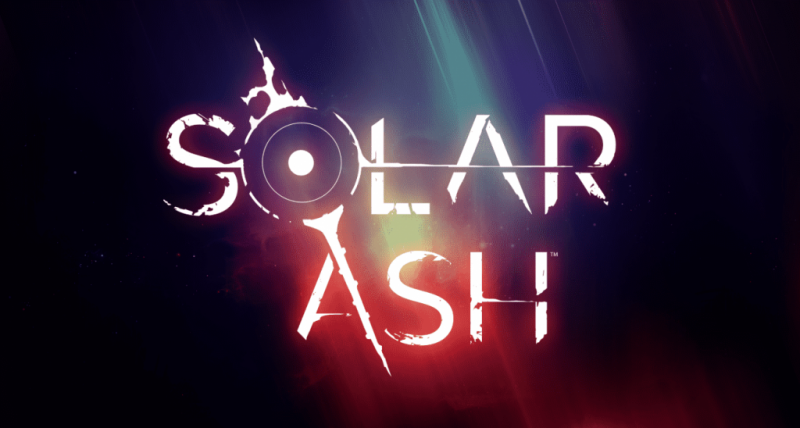

America - Front
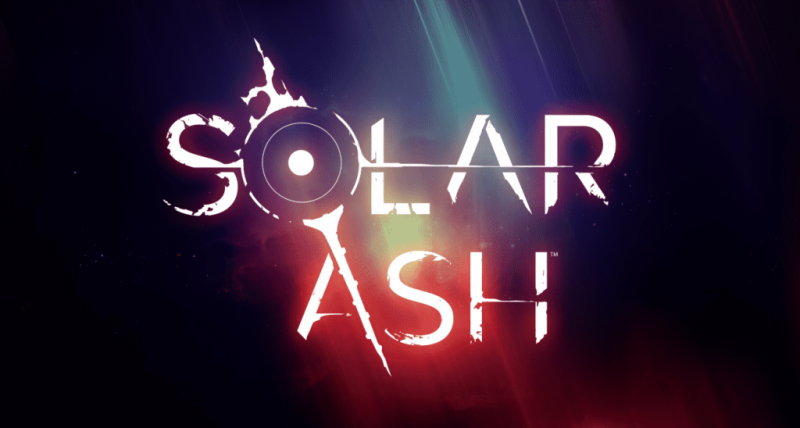

America - Back

Heart Machine
Action-Adventure
| Owners: | 0 |
| Favorite: | 0 |
| Tracked: | 0 |
| Wishlist: | 0 |
| Now Playing: | 0 |
I skate atop non-newtonian clouds suspended in the abyss. Surrounding me are the remains of demolished societies and decimated metropolises of varying planets coalesced into an urban sprawl of utter desolation. Subway systems and buildings have been ripped apart and scattered haphazardly. An alien woman weeps in a nearby building, lamenting her decisions and apologizing profusely to those who aren’t there. Her mind is too far gone to be helpful on my mission. Aside from myself and the woman, the only other things alive in this pit of loneliness and despair are monsters that seek to destroy me. I’ve learned that these monsters are called remnants, but remnants of what? The question hangs, unanswered, as I continue gliding frictionless among the destruction, searching with hope and vigor for the crew that has gone missing. As I destroy a black goo-like anomaly, a huge being arises from the sea of clouds. This enormous leviathan pervades the city in such a way that makes the city seem paltry by comparison. The beast is awe-inspiring. I cannot help but to think of it as both majestic and frightening. But I know what I must do, I have no other option. I must destroy the beast.
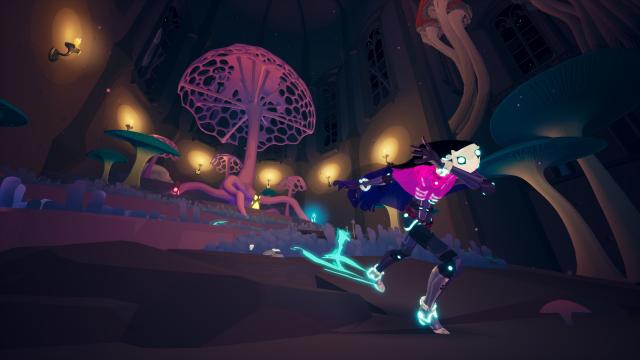
This is just a taste of the experience of Solar Ash. Developed by Heart Machine, the same developers of the esteemed Hyper Light Drifter, Solar Ash seeks to provide the player with a type of emotional experience rarely approached in the medium. You play as Rei, a Voidrunner, who enters into the ultravoid in an attempt to save her crew and destroy the ultravoid, thus saving her planet from being consumed and destroyed by it. By discovering Voidrunner stashes you begin to piece together the mystery of what happened to your crew and why the starseed, the machine that was brought to destroy the ultravoid, didn’t work.
Through your adventure you also meet a handful of others stuck within the ultravoid. These individuals have their own unique stories which fit the game's narrative thematically. Story elements are mostly optional, but the more you dig the more questions you have, and the more interesting it becomes. Piecing together the stories of Rei, the crew, and those locked within the ultravoid quickly became my favorite part of Solar Ash. Though some of the foreshadowing is quite obvious, these moments come a bit later into the game, avoiding giving it away too early. Still, it did detract from a surprise ending, which I feel could have been a bit more impactful to the player. Nevertheless, the growing feeling of despair, sadness, and regret I felt as I pieced together the story are emotions I rarely feel when gaming.
The neon vibrance of Rei contrasts nicely with the environment, particularly the pastel clouds. Though Solar Ash differs significantly graphically from Heart Machine’s previous title, Hyper Light Drifter, it’s apparent how the art direction of that game influenced a similar overall aesthetic. Areas utilize thematic coloring, such as Ironroot Basin with its complementary turquoise and orange. This allows areas to feel distinct from each other, though there are some repeat color coordinations. Along the vistas you’ll notice dilapidated cities from a variety of planets. In the distance you’ll also find Rei’s own planet looming over as a constant reminder of your goal in the game. The artistic direction really helps boost its atmosphere, but graphically it's unimpressive. Trees, buildings, and other environmental objects are very simple geometrically. It is important to keep in mind that it was made by a small team, so it’s difficult to really criticize this aspect too harshly.
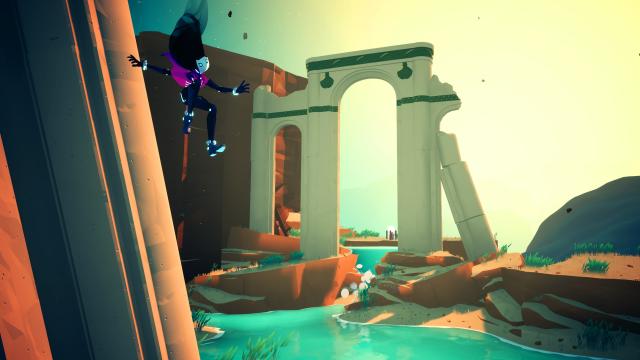
However, despite the low-intensity of the graphical quality, performance on my PC was notably sub-par. The framerate was very erratic, despite both my GPU and CPU being significantly under-utilized. Utilization of my GPU never went past 50%, while the CPU only ever rose to the 20% mark. I attempted to change my settings down to high, medium, and low, but everything aside from the lowest setting still gave me huge dips down into the low 80s and even 70s. Not a huge issue in and of itself, but given the graphical makeup of the game, and the fact that my PC has no problem with more graphically intensive titles at a rock solid 144FPS, I was a bit suspicious. It’s difficult to discern exactly what the problem is, as some busier areas held higher average framerates than ones that were emptier. This seems to indicate it might be a streaming issue within the game itself. If you’re playing on PC, this may be an adventure that warrants capping your framerate to something fairly lower than your machine is capable of to maintain consistency. In addition, there were a handful of times when Solar Ash dropped my framerate in half and maintained this framerate throughout areas I had already explored. I had to exit the game and relaunch it to bring my framerate back up to normal. Lastly, changing the resolution scaling didn’t seem to affect performance in any notable way either. I hoped that these issues would be patched out with a day one patch, but when I received that patch things did not improve, so I hope the developers can look into this further.
From a sound design perspective, I find the pieces very interesting. Solar Ash doesn’t utilize any “catchy tunes”, but what it has are eloquently crafted pieces that toe the line between discordant and melodic. It all fits into the background, exactly where it needs to be, and helps increase the overall atmosphere. The use of synth provides a cosmic and ethereal quality that works with the setting. Even the cries and screams from the remnant's as you defeat them make you feel remorse. Fryda Wolff does a great job voicing Rei as well. Rei feels quick, smart, and confident. At times she even reminded me of another video game heroine, Horizon: Zero Dawn’s Aloy, which is certainly not a bad thing. Though I don’t think that the sound design is going to be winning any awards, I do feel like it helps improve the overall atmosphere of the game and I applaud the quality of the score.
Gameplay is unfortunately where Solar Ash starts to falter. Skating is a big element of the game, and I felt the developers handled it appropriately. It’s fluid and feels nice gliding across the clouds and structures. It feels a bit more like ice skating than rollerblading, so momentum, particularly during turns, works much differently than I initially anticipated. This slippery style of skating allows for a real feeling of momentum as you bob and weave through levels; that is, until you jump. Jumping has the problem of ruining your momentum at unfortunate times. If you push a different direction than exactly forward, the momentum you’ve gained could be lost and will need to be built back up again. This can cause some frustration as the game feels better the faster you’re going. Luckily, you're given a booster that helps you gain that lost momentum pretty easily. Nevertheless, time will be lost, and when a big part of Solar Ash is beating a timer, it can be rather frustrating to have to try again because you jumped too soon or at the wrong angle.
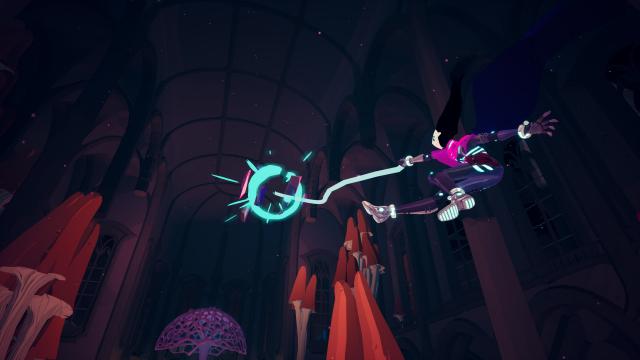
You also have the ability to timeslip, which activates slow motion, and grapple onto specific hooks. When you timeslip it also allows you to grapple onto things from a greater distance. There are also rails to grind on, which are never particularly exciting but feel cool on occasion, and some simple platforming as well. When Solar Ash uses all of these mechanics together it feels great. You’re jumping, boosting, gliding, grinding, grappling, and attacking enemies as you navigate the world. Unfortunately, Solar Ash doesn’t use these mechanics together often enough, at least not in the world overall. It’s really only the very last section of the final area that you begin to feel you’ve mastered these mechanics, but by then the game is practically over and it feels too short-lived.
There isn’t much to say about the combat either, unfortunately. There are no combos and there isn’t much strategy. You glide up to an enemy, press the button to slash, then repeat that until the enemy is dead, which doesn’t take long. Enemy variety is practically non-existent. Aside from bosses, I believe there are really only four or five types of enemies in the game. However, despite the simple combat mechanics, boss fights are high adrenaline encounters. This is where Solar Ash actually shines and its true potential can be seen, if only for a moment. Before you face a boss, known as both massive anomalies or remnants, you must find smaller parts of the remnant, known as anomalies, and destroy them. How you destroy the smaller anomalies is a bit like a time challenge with slight puzzle elements. You have to slash at spears protruding out of a black goo-like substance. Sometimes this requires solving a brief puzzle, such as creating a grind rail, but it’s typically just about finding the most optimal route. It’s not difficult, but there is a timer. If you aren’t quick enough, the spears reset; if you happen to be touching the black goo when this happens you die. These parts are simple and work well enough. After a certain amount of these have been dealt with, the massive anomaly will appear before you.
Destroying the massive anomaly isn’t unlike the Colossi from Shadow of the Colossus. That is, you must find a way to climb on top of the remnant and hit its weak spots to bring the beast down. Climbing onto the remnant requires finding a hook for Rei to dash towards, and then the fun begins. Just like the smaller anomalies, you're tasked with hitting spears in sequential order within a time limit, but now these spears are jutting out the remnant's weak points instead. You’ll be skating, boosting, grinding, slashing, and grappling atop these massive beasts, moving as fast as you can to defeat them. Using the timeslip to grapple onto a far away spear narrowly avoiding the caustic skin of the beast and keeping the timer going feels both satisfying and relieving. The basic premise of each boss is the same, but their designs are unique, and the way you hook onto them varies, if only slightly.
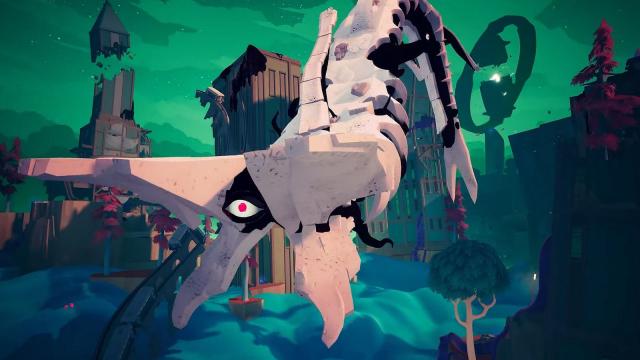
My favorite boss to fight, The Withered Eye, occurs on a neighboring moon where the massive anomaly is almost as large as the moon itself. For this fight, instead of just locating a hook, you must bait an attack, strike at each of the weak points located on the remnant’s many arms, and then the hook will reveal itself. Thrilling as this may be for each boss, the problem is that bosses are not a large part of Solar Ash despite being the most fun. Each boss can take about an hour to get to, but is typically defeated in around 10-15 minutes. This essentially means that the worst part of the game, which is wandering from anomaly to anomaly until you have defeated enough to lure out a boss, is the majority of what you’ll experience here.
There are some other things to do within the ultravoid, however. You can choose to spend your time collecting plasma, which can only be described as globules of floating blood. Once you collect enough plasma you can speak with your A.I. companion, Cyd, and unlock a shield upgrade. This is all well and good, until you have enough within the second area to purchase all of the available shield upgrades and no longer have any significant drive to collect them anymore. Solar Ash tries to balance this by destroying a piece of your shield every time you defeat a boss, but you’ll likely have enough to make up for that without going out of your way to collect them.
Then there are Voidrunner stashes, as I’ve mentioned previously, which are hidden caches that contain logs of the crew you were sent to save. Each cache also provides a piece of armor. Collecting five Voidrunner stashes nets you a brand new suit with new capabilities; however, the suit upgrades aren’t particularly interesting or helpful, and two of them become completely useless by the end game. Though initially I was looking for the Voidrunner stashes to get new pieces of armor, I eventually began looking for them in order to piece together the story of Rei’s crew.
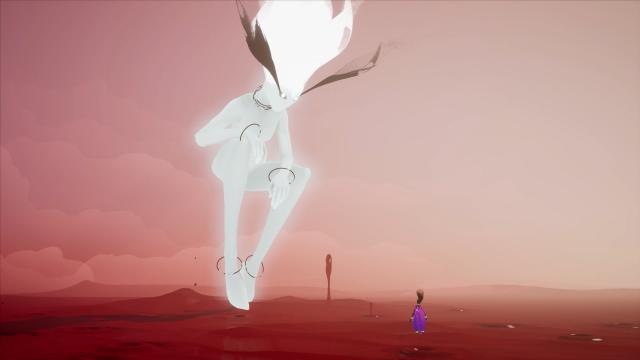
Lastly, there are also several NPC’s in the ultravoid. These NPCs give you a few tasks to complete to help them on their quests. One, for example, is a crustacean alien who seeks to understand where his own crew went and why he hasn’t heard from them. Despite being completely optional, these stories were rather emotionally impactful and fit into the overall narrative of the game. You’ll want to complete these optional quests, despite the tasks themselves being rather mundane.
But therein lies the problem. The story and sense of dread are pronounced. You begin to feel lost in a void surrounded by death and destruction with nothing to do but keep your eye on the goal. Feelings of poignancy and desperation are evoked throughout, and it leaves an incredible impact on you. Yet, the gameplay just doesn’t have me wanting to revisit the title for another playthrough. Nothing is intrinsically bad about it, it just feels like it could have been so much more. The final area, Luminous Peak, as well as the boss fights, provide a look at how great the game could have been had it just included more of them. Instead, you wander from place to place repetitively with little to motivate you aside from the story. It’s unfortunate, because I think that this title and the developers have so much going for them, and I truly wanted to enjoy Solar Ash more than I did. The developers at Heart Machine have created a game with an impeccable amount of heart, it’s just a shame they didn’t give it enough soul.









